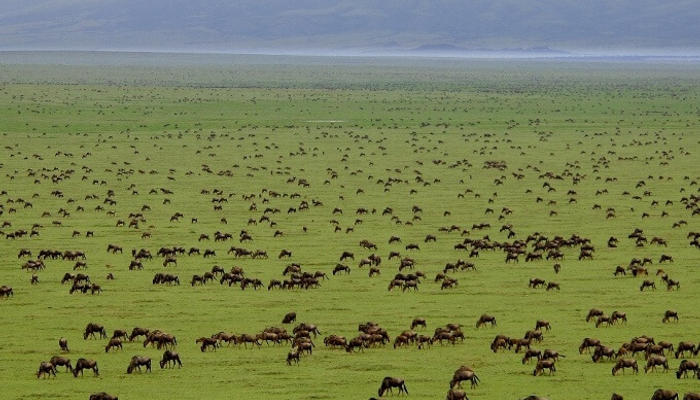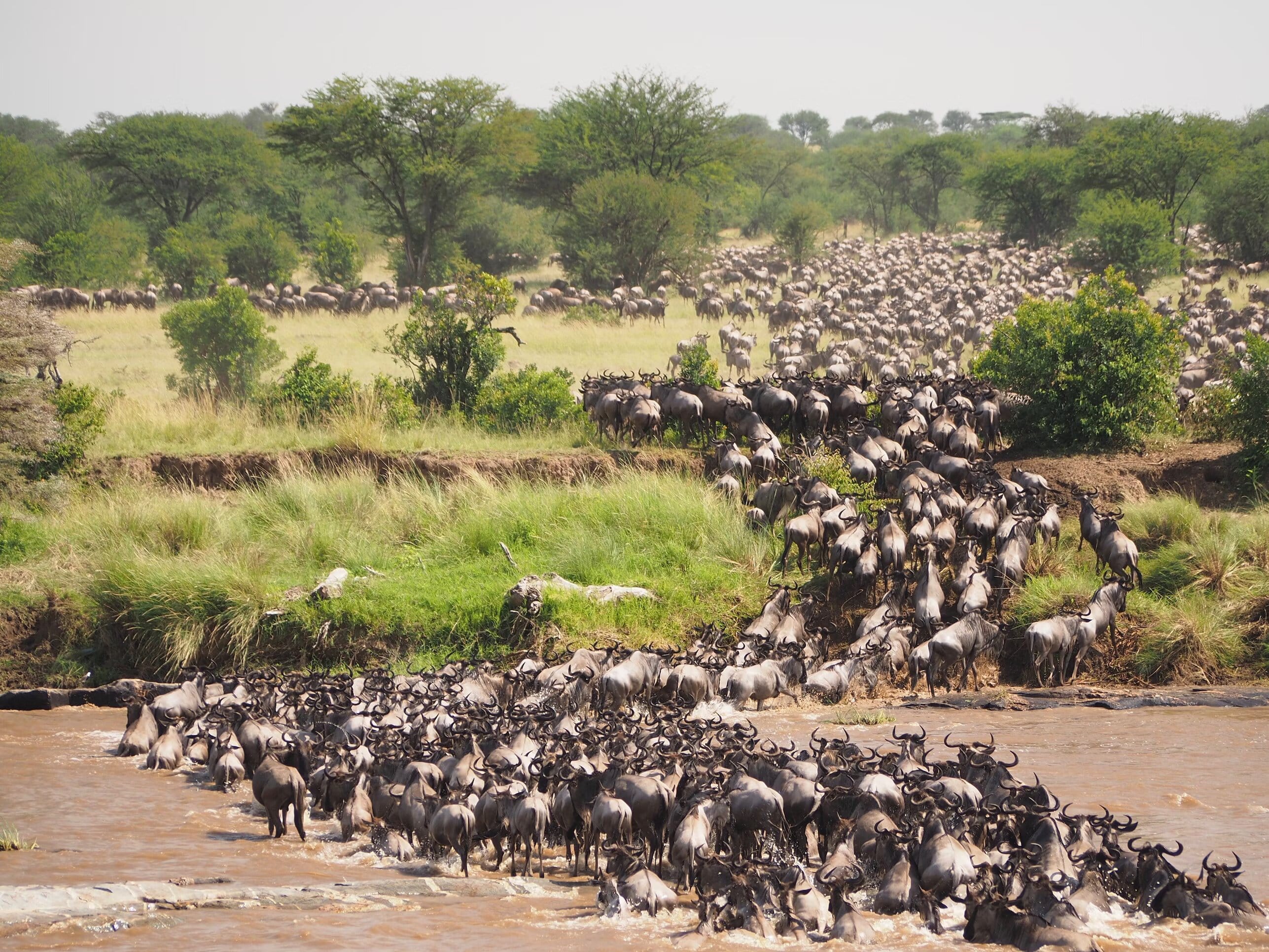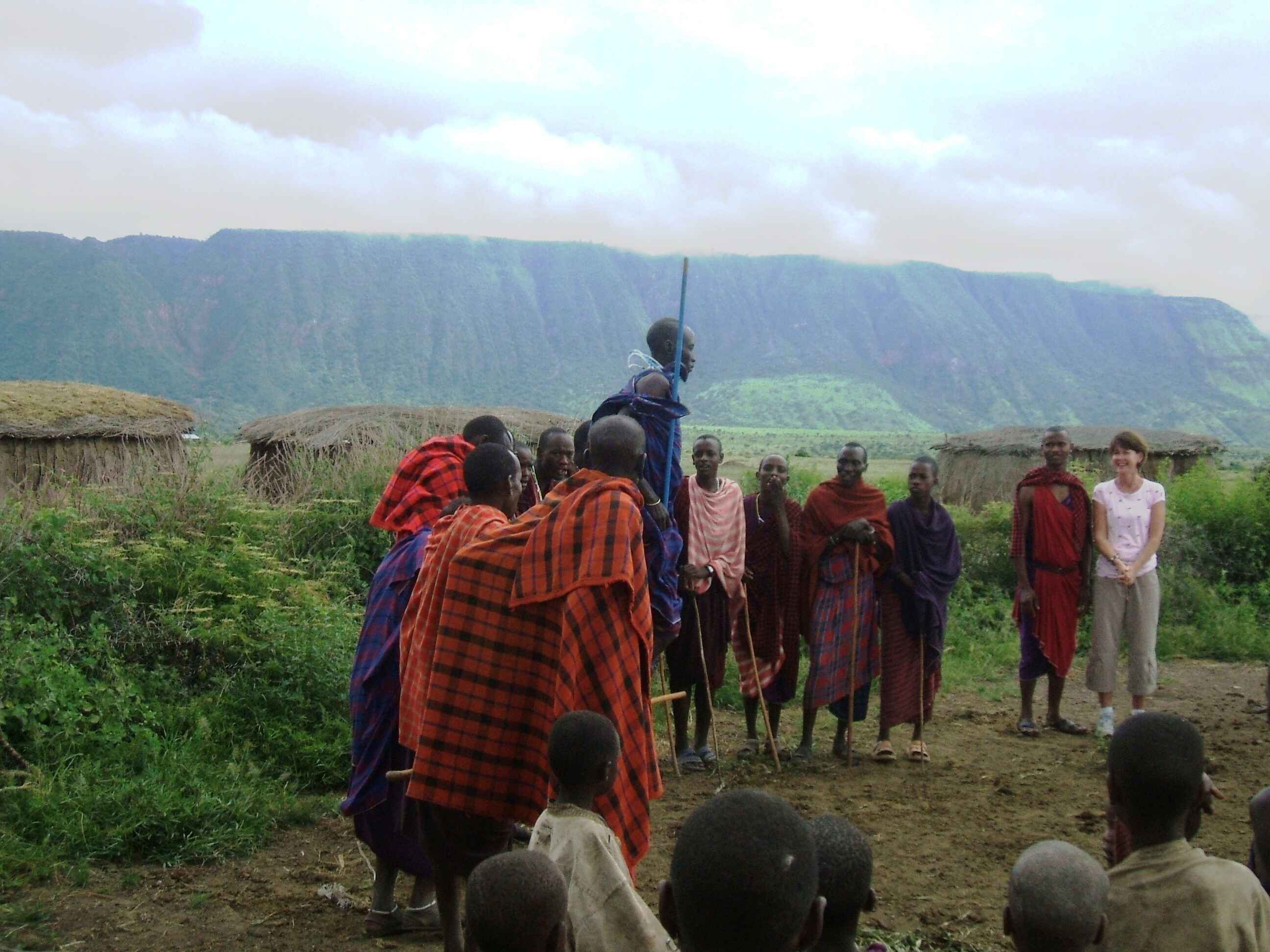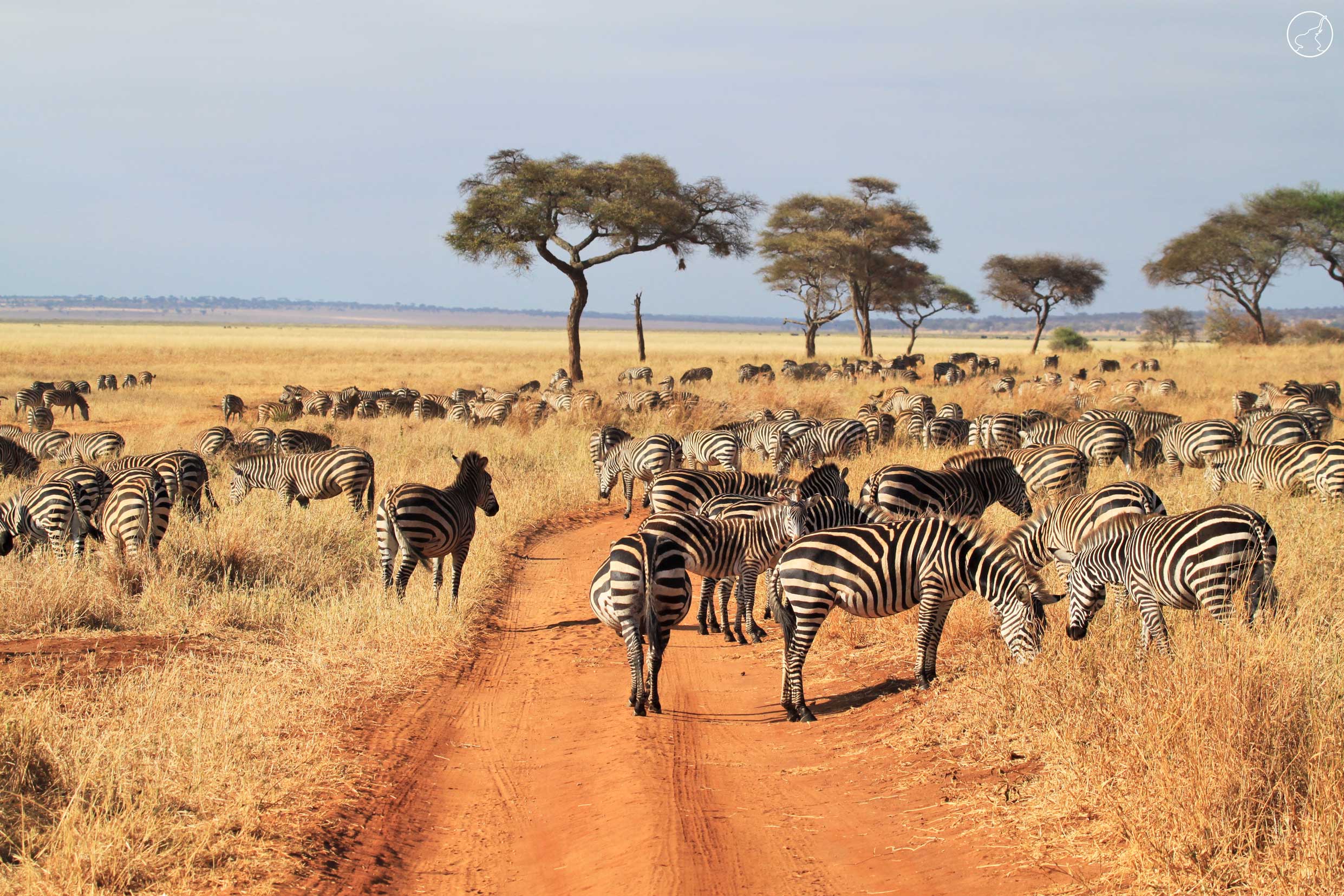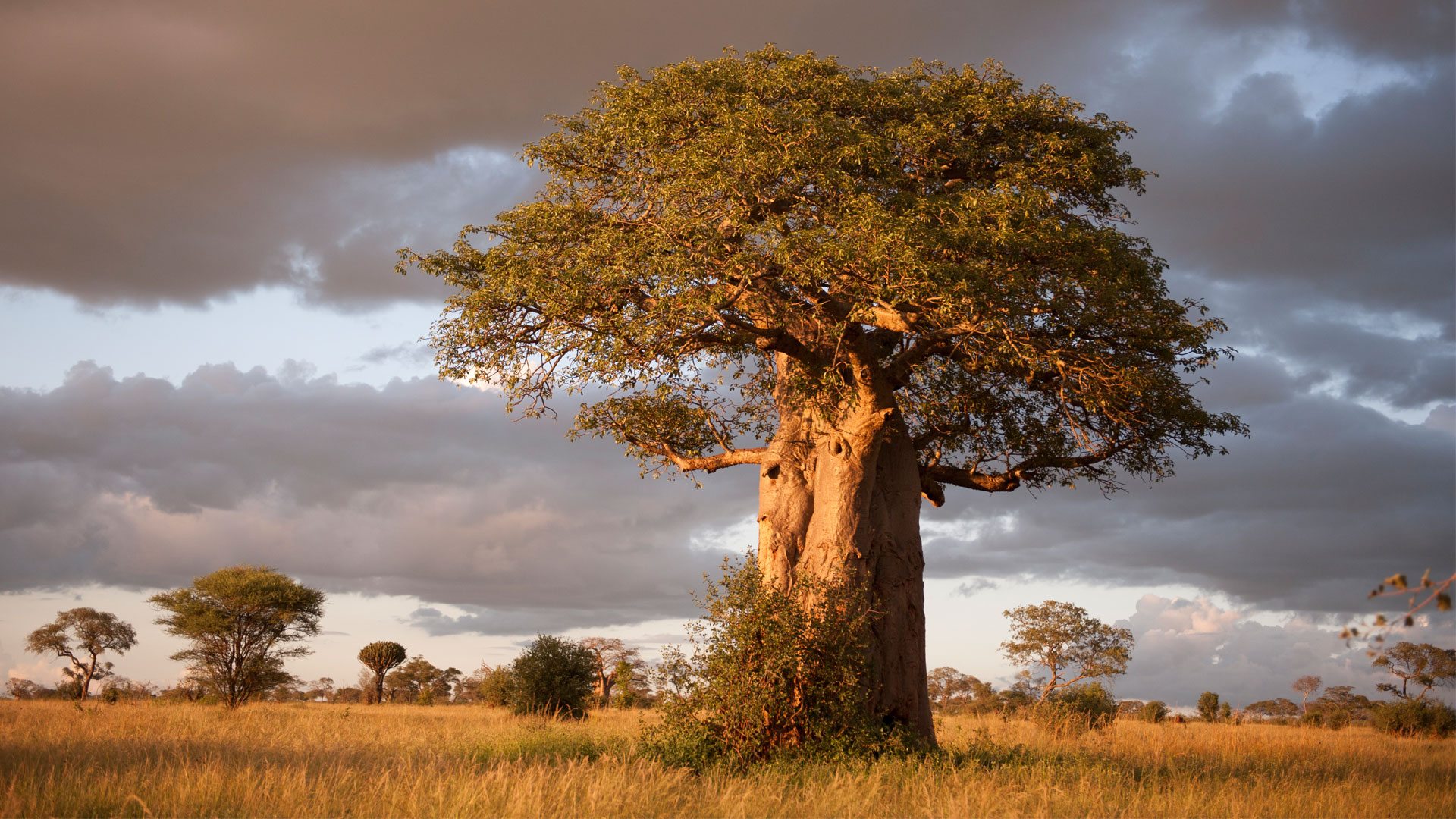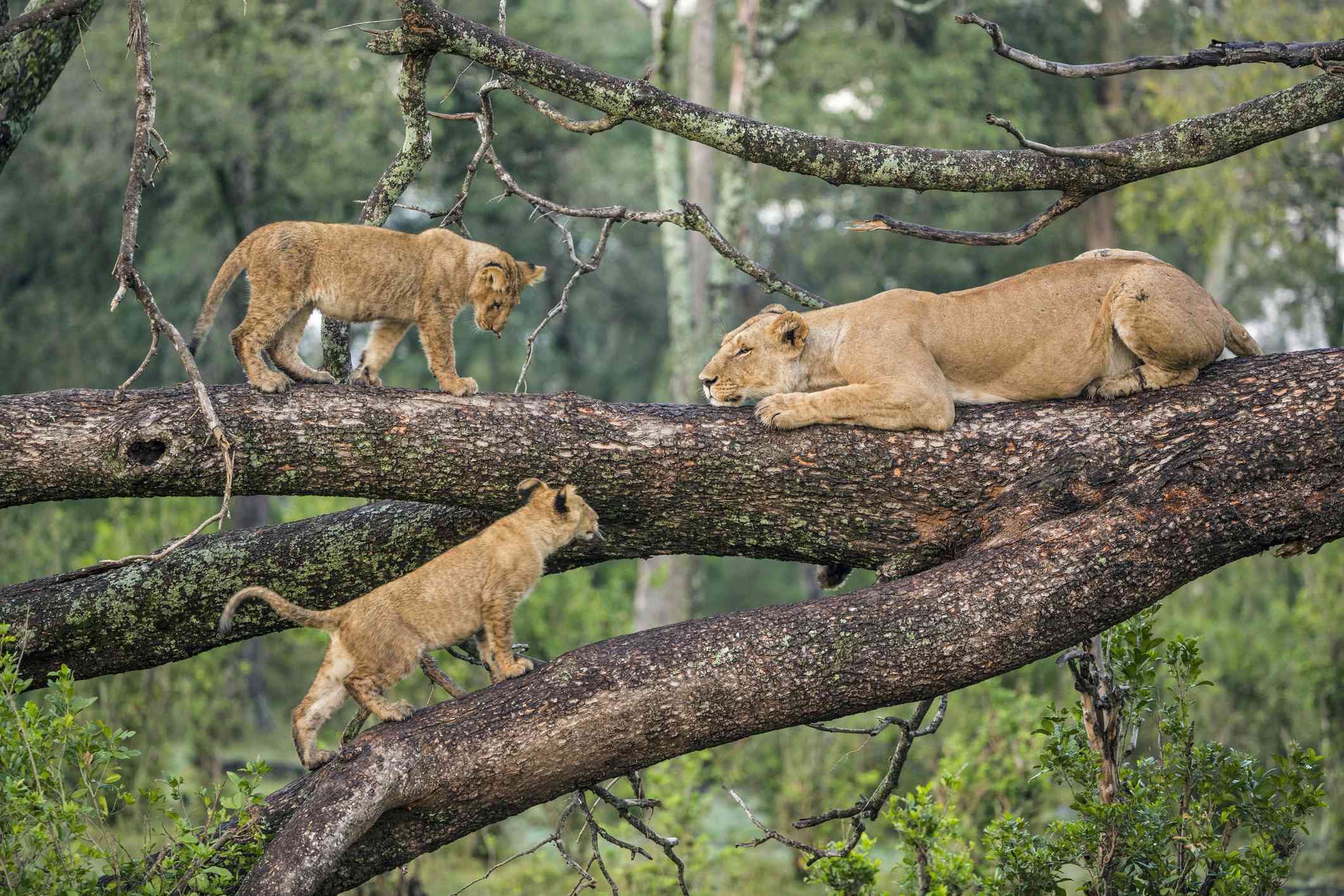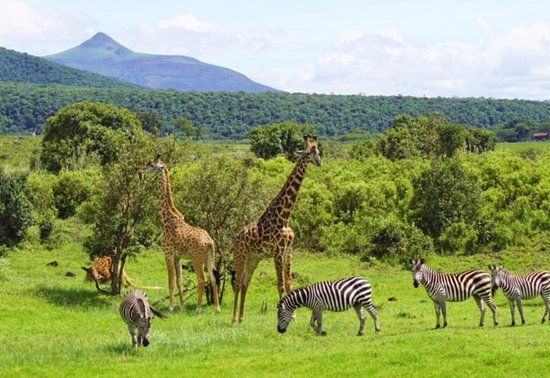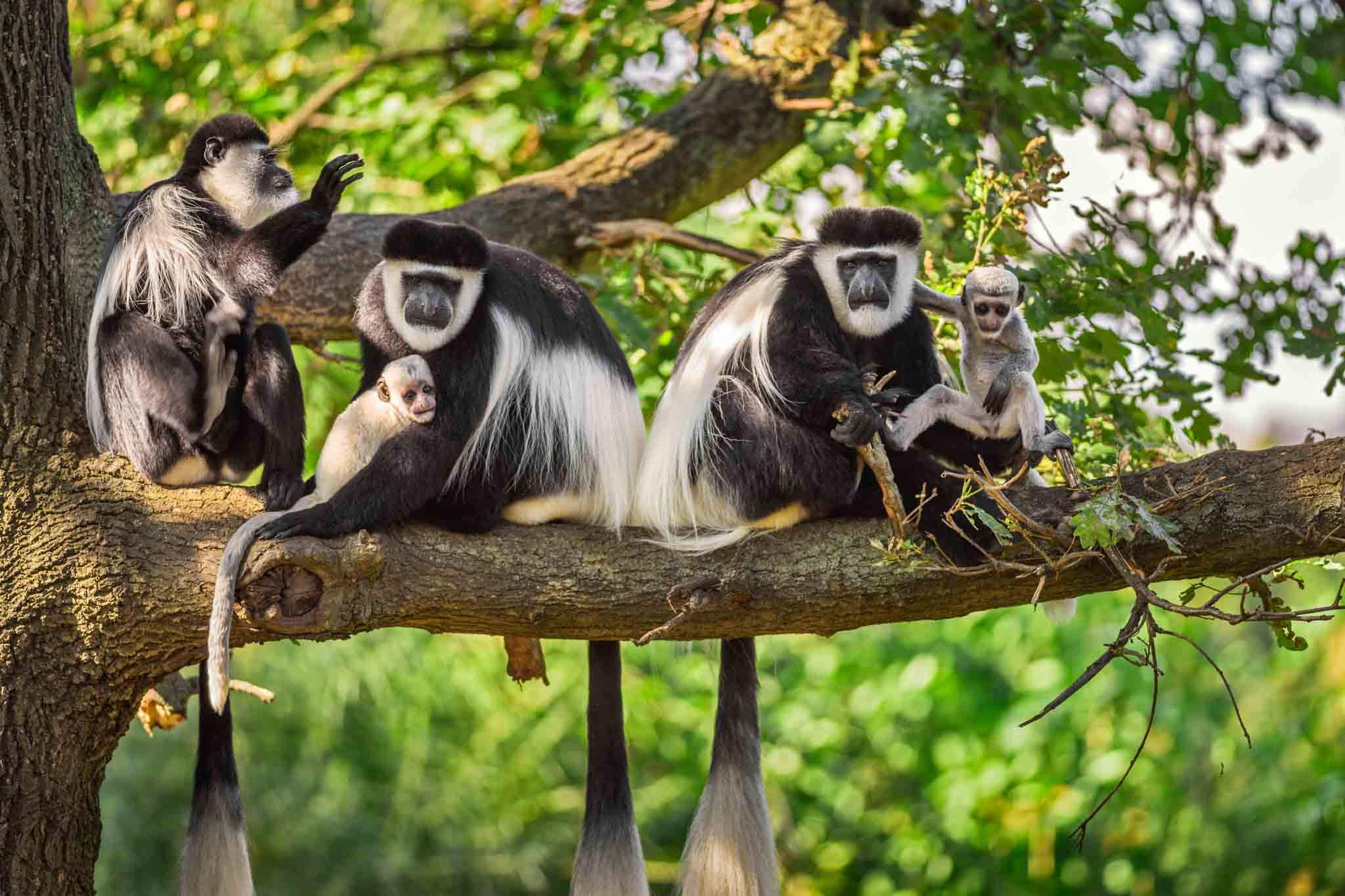Wildlife Safari
Licensed Operator
Annually approved for tour operating activities by the Ministry of Natural Resources and Tourism, Tanzania is rightfully extolled as the finest safari destination in Africa. Expeditions of National Geographic, Discovery Channel and Animal Planet don't cease to produce documentaries about the unique wildlife habitats and beauty of this place. Being the largest country in East Africa, Tanzania has more than 30% of its vast territory classed as national parks, game reserves and conservation areas.
Serengeti national Park
Serengeti National Park, which is rightfully deemed a World Heritage Site, is the one place where one can witness the Great Migration, when Wildebeest and Zebra in their hundreds of thousands follow the yearly rain patterns in search of green pastures. This takes place against the backdrop of the pristine “endless plains of Africa", spanning 15 thousand square kilometers. This Park offers something for visitors of all ages. Adults cannot help but be struck by the surrealism of the multitude of herbivores, followed by lions, cheetah and hyenas, moving with the single mindedness of the struggle for survival. The younger children will, in turn, be thrilled to experience the place that inspired the makers of “The Lion King”. And, of course, all those familiar with National Geographic and the Animal Planet channel will readily recognize the Serengeti National Park of Tanzania as the place where many of their documentaries were filmed.
Wildebeests and Zebras frolicking, childlike, on the plains; Giraffe - ever aloof - gazing upon you from their formidable height; Lions, Cheetahs and Leopards either stalking their prey or lazing in the shade just as their domestic relatives do - all these are part of the Great Migration that attracts so many visitors to Serengeti National Park of Tanzania. From October to November more than a million Wildebeests and hundreds of thousands of Zebras migrate from the northern hills to the southern plains of the Serengeti where the vegetation is lush during Short Rains. After the Long Rains of April-June the Migration turns northwards. The ancient instincts driving these herds are so powerful that no obstacle, including the crocodile-infested rivers, will stop them. And while many perish along the way, an estimated quarter of a million calves are born, sustaining this never-ending cycle.
Interesting Facts about Serengeti National Park
Serengeti National Park is one of the most popular wildlife attractions in the world. Visiting it is like touching something distant and unknown. Here in the Serengeti valley, the animal world is directly connected with history. Seeing herds of Wildebeest passing by the German forts of the First World War is an unforgettable sight. All of this part of the Great Rift Valley is in harmony. Extinct volcanoes and mountain ridges merging into plains that extend towards the horizon in the West. These turn into tropical forests and, eventually, run into one of the largest lakes in the world- Lake Victoria. Watching these landscapes and the animals that inhabit them will undoubtedly leave you with a sense of magic.
Inside Serengeti National Park you may see these animals
| # | Animals | Percentage |
|---|---|---|
| 1 | Lion | 100% |
| 2 | Rhino | 40% |
| 3 | Leopard | 40% |
| 4 | Zebra | 100% |
| 5 | Elephat | 100% |
| 6 | Cheetah | 90% |
| 7 | Buffalo | 100% |
Ngorongoro Crater
The ancient Ngorongoro Crater is a UNESCO world heritage site and one of the most interesting parks of Tanzania. A safari tour of the Ngorongoro National Park is your chance to see the greatest number of wildlife species per square kilometer. The Crater – set amidst the tropical forests of the Great Rift Valley highlands – is the crown jewel of Tanzania’s National Parks. The tour, beginning at the Crater rim with its breathtaking views of the Crater floor and carrying on to the game drive in the Crater itself with its plains, acacia woodlands and lakes teeming with bird- and wildlife, shall leave you with a sense of wonder to be cherished for the rest of your life!
The Ngorongoro Crater is within the Ngorongoro Conservation Area, an incredible area: steeped in history from archeological finds at the Olduvai Gorge, Empakai crater hikes, and breathtaking scenery from the Rift Valley Highlands. The Crater itself is a UNESCO World Heritage Site as it is the world’s largest, intact (but inactive) volcanic caldera. It also boasts the highest population of wildlife species per square kilometer anywhere in Tanzania. The Crater is also home to the endangered black rhinoceros and is one of the few remaining places in the world where this ancient creature may be spotted in the wild. A tour of Ngorongoro Crater begins at the crater rim, with breathtaking views of this ancient crater from above, and continues with a game drive within the Crater itself. Visitors experience acacia woodlands and lakes, teeming with bird-life, and plains filled with zebra, antelope, wildebeest, and elands. Visitors are sure to see lions lounging in the tall grass, and enjoy lunch near a pond of hippopotami. From the endless zebra walking dangerously close to the sleeping lion to the rare black rhinoceros, Ngorongoro Crater will leave you with a sense of wonder unlike any other place on earth.
Ngorongoro Wildlife Ngorongoro Crater offers the highest density of animal species in Tanzania. An early morning safari will give you the best chance to spot the reclusive leopard in highlands trees as you approach the Crater. Unique African Big Cats that can be seen here include the catious caracal and serval cats. The small herd of elephants are residents, as they cannot climb up the steep sides of the crater, they can be seen drinking at the lakes or enjoying the shade of the woodlands. Zebra and wildebeest graze on the plains of the Crater floor under the ever-watchful eyes of a pride of lions, who are also residents because hunting is easy in the Crater. Ancient hippos and the endangered black rhino have their homes in Ngorongoro Crater. And a safari lunch near the hippo pond will surely include bird-sightings such as the well-named superb starling and native guinea fowl.
Interesting Facts about Ngorongoro Crater
The Ngorongoro Crater is the remnant of the explosion of a huge volcano, which happened two to three million years ago. Being as high as 1,800 meters (5,900 feet) above sea level, this area can be hot in the day with cold highland nights. With its 264 square kilometer (102 square mile) expanse of the Crater floor nested between the steep 610-meter- (2,000-foot)-tall sides of the Crater, it is a must-see destination. Ngorongoro Crater lies in the Crater Highlands of North Tanzania. It is part of the Ngorongoro Conservation Area and is one of the Seven Wonders of Africa. In 1951, in great part thanks to the efforts of Michael and Bernard Grzimek, the Ngorongoro Crater was declared a National Park. The zebra-striped airplane they used to undertake aerial surveys and animal census was a common site over the Crater and neighboring highlands at the time. One of these flights ended in tragedy, when the twenty-five-year-old Michael Grzimek died in a crash. His father Bernard wrote the famous book "Serengeti shall not die" which we strongly recommend to all those travelling in the North of Tanzania.
Inside Ngorongoro Crater and Conservation area you may see these animals
| # | Animals | Percentage |
|---|---|---|
| 1 | Lion | 100% |
| 2 | Rhino | 75% |
| 3 | Leopard | 20% |
| 4 | Zebra | 100% |
| 5 | Elephat | 80% |
| 6 | Cheetah | 70% |
| 7 | Buffalo | 100% |
Tarangire National Park
The park is named for the Tarangire River that cuts through the park, a life-source for both plans and animals. Tarangire National Park is known for two African giants: elephants and the great baobab trees. Visitors can see colonies of these incredible trees that are more than 100 years old. Dry season brings many animals seeking the water from Tarangire River: first come the peaceful grazers such as zebras and wildebeest, followed by leopards and lions seeking prey. All the animals await the mighty elephants to dig up holes in the riverbeds and bring up groundwater to quench their thirst.
Interesting facts about Tarangire National Park
From July to October, the dry season, Tarangire National Park is teeming with animals as wildlife, including large elephant herds, do not stray far from the river bed. Elephants need between 100 and 300 litres of water a day to survive and the holes they dig in the sands of the river are the only source for hundreds of miles of kilometres around. These holes attract other animals, who drink the water after the elephants have had their fill. If all the herbivores are in Tarangire, the great lions and leopards will soon follow to get their dinner, as well. Tarangire National Park also provides great opportunities for birdwatching: being the nesting grounds for a large number of bird species. The largest flying bird in the world, the Kori Bustard is often spotted here. Hornbills, the yellow-collared Lovebird as also endemic to the area. There are options for night safaris and short walking safaris for travellers who wish to spend a few days in Tarangire National Park.
Inside Tarangire National Park you may see these animals
| # | Animals | Percentage |
|---|---|---|
| 1 | Lion | 50% |
| 2 | Leopard | 30% |
| 3 | Zebra | 90% |
| 4 | Elephat | 90% |
| 5 | Giraffe | 95% |
| 6 | Buffalo | 95% |
Lake Manyara National Park
Lake Manyara National Park stretches in Tanzania’s rainforest at the foot of The Great Rift Valley. Not only has the park attracted predators; it also has become home for huge colonies of pink flamingos whose number amazes even experienced travelers. The thick pink spot along the shore reflected from the water surface seems to raise manyfold their already huge population.
More than 400 kinds of birds inhabit the park, some of which can be found only in Tanzania in Manyara Park. Pelicans and storks, ibises and cranes, cormorants and marabous are all living in this small park. There is a great number of ancient bird families such as hornbills. As in other well-known parks of Tanzania you will certainly meet zebras, buffalos, elephants, giraffes, lions and many other representatives of the African fauna.
Interesting facts about Lake Manyara National Park
Colonies of pink flamingos migrate from one lake to another throughout the year coming to Lake Manyara National Park in the period from June to September. As their abode they choose the mud flats where crustaceans, which are their main diet, live. Without it their feathers have grey-white color. While newly hatched flamingos are always grey, they become pink as they get older – in a year, thanks to the pigment carotene which is contained in their food.
Inside Lake Manyara National Park you may see these animals
| # | Animals | Percentage |
|---|---|---|
| 1 | Lion | 50% |
| 2 | Leopard | 30% |
| 3 | Zebra | 100% |
| 4 | Elephat | 100% |
| 5 | Giraffe | 100% |
| 6 | Buffalo | 100% |
| 7 | Flamingo | 90% |
Arusha National Park
While leaving your game drive vehicle outside of campsites and lodges may be forbidden in most national parks in Tanzania, Arusha National Park offers guided walks with an armed ranger. Experiencing the African montane forest with its plethora of game and bird-life on foot is an unmatched experience.
The first time you spot the rusty brown of the bushbuck standing in the grass mere meters from the path you are walking is a truly magic moment. You may also encounter a herd of buffalo grazing as little as 20-30 meters away. While these magnificent animals rightfully inspire awe with their sheer size: they can, after all, weigh as much as a ton. Such encounters are totally safe in the company of one of the experienced rangers of Arusha National Park. Giraffe, elephant, antelopes, and even the secretive leopard can be spotted in the mountain woods of the Arusha Park leaving you with memories that will surely be cherished for the rest of your life.
Visitors may choose the duration of the walk, and the difficulty of the route. Walks begin in across a plain, where visitors may see herds of zebra or distant cape buffalo. The walk continues toward the forest at the foot of Mount Meru, where there is a good chance of spotting giraffe munching on acacia trees. The walk ends with Ulyulyusya waterfall, a magnificent cascade coming directly from the Mountain.
Interesting Facts about Arusha National Park
While it is one of the smaller parks, Arusha National Park offers many attractions: Arusha Waterfall and Ngurdoto Crater. While the latter is only three kilometers across, it is so reminiscent of Ngorongoro Crater that the locals call it Ngorongoro’s younger brother. The Momella Lakes are a unique attraction that allows for canoeing: a great way to get closer to the pink flamingoes that feed in the shallows. Arusha National Park is also home to the majestic Mount Meru. Standing at 4566 meters, this dormant volcano is the fifth-highest point in all of Africa. It is a popular destination for those who enjoy the challenge of climbing, or preparation for climbing nearby Mount Kilimanjaro.
Inside Arusha National Park you may see these animals
| # | Animals | Percentage |
|---|---|---|
| 1 | Zebra | 100% |
| 2 | Elephants | 15% |
| 3 | Impala | 80% |
| 4 | Warthog | 100% |
| 5 | Jackal | 50% |
